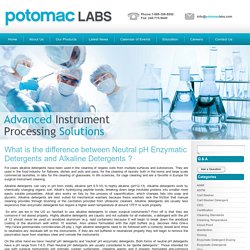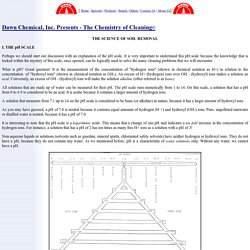

Disinfection & Sterilization Guideline:Disinfection - HICPAC. Guideline for Disinfection and Sterilization in Healthcare Facilities, 2008 Disinfection Many disinfectants are used alone or in combinations (e.g., hydrogen peroxide and peracetic acid) in the health-care setting.

These include alcohols, chlorine and chlorine compounds, formaldehyde, glutaraldehyde, ortho-phthalaldehyde, hydrogen peroxide, iodophors, peracetic acid, phenolics, and quaternary ammonium compounds. Commercial formulations based on these chemicals are considered unique products and must be registered with EPA or cleared by FDA. In most instances, a given product is designed for a specific purpose and is to be used in a certain manner. Disinfectants are not interchangeable, and incorrect concentrations and inappropriate disinfectants can result in excessive costs. Antiviral activity of alcohol for surface disinfection. NaOH%20and%20column%20cleaning. Effects of several virucidal agents on inactivation of influenza, Newcastle disease, and avian infectious bronchitis viruses in the allantoic fluid... Agents For Cleaning Validation – Alkaline Vs Acidic. There are two types of cleaning detergents: alkaline-based or acid-based detergents that are often formulated with surfactants, chelating agents, and emulsifiers to enhance the effectiveness of the detergents.

Along with the cleaning agent water is also an active ingredient that actually adds to detergency of cleaners. Water breaks up soil particles after the surfactants reduce the surface tension and allow the water to penetrate the soil and acts a universal solvent. Many of the water based ready to use formulations may contain as much as 90-95% water. With this much water present in a cleaner, why do they work so well?
What is the difference between Neutral pH Enzymatic Detergents and Alkaline Detergents ? For years alkaline detergents have been used in the cleaning of organic soils from multiple surfaces and substances.

They are used in the food industry for flatware, dishes and pots and pans, for the cleaning of laundry both in the home and large scale commercial laundries, in labs for the cleaning of glassware, in life sciences, for cage cleaning and are a favorite in Europe for surgical instrument cleaning. Alkaline detergents can vary in pH from mildly alkaline (pH 9.5-10) to highly alkaline (pH12-13). Alkaline detergents work by chemically changing organic soil. Alkali’s hydrolyzing peptide bonds, breaking down large insoluble proteins into smaller more easily soluble polypetides.
Alkali also works on fats by the process of saponification, which changes fats into soap and glycerin. The Chemistry of Cleaning. I.

THE pH SCALE Perhaps we should start our discussion with an explanation of the pH scale. It is very important to understand this pH scale because the knowledge that is locked within the mystery of this scale, once opened, can be logically used to solve the many cleaning problems that we will encounter. What is pH? Good question! All solutions that are made up of water can be measured for their pH. A solution that measures from 7.1 up to 14 on the pH scale is considered to be basic (or alkaline) in nature, because it has a larger amount of hydroxyl ions. The Basics: How Alkaline Lysis Works. Alkaline lysis was first described by Birnboim and Doly in 1979 (Nucleic Acids Res. 7, 1513-1523) and has, with a few modifications, been the preferred method for plasmid DNA extraction from bacteria ever since.

The easiest way to describe how alkaline lysis works is to go through the procedure and explain each step, so here goes. 1. Cell Growth and Harvesting The procedure starts with the growth of the bacterial cell culture harboring your plasmid. When sufficient growth has been achieved, the cells are pelleted by centrifugation to remove them from the growth medium. 2.
The pellet is then re-suspended in a solution (normally called solution I, or similar in the kits) containing Tris, EDTA, glucose and RNase A. Bitesize Bio. SDS-PAGE (sodium dodecyl sulphate-polyacrylamide gel electrophoresis) is commonly used in the lab for the separation of proteins based on their molecular weight.

It’s one of those techniques that is commonly used but not frequently fully understood. So let’s try and fix that. SDS-PAGE separates proteins according to their molecular weight, based on their differential rates of migration through a sieving matrix (a gel) under the influence of an applied electrical field. Making the rate of protein migration proportional to molecular weight. Aem00201-0140. pH modification of the effects of detergents on the stability of enteric viruses. Sodium dodecyl sulfate. Sodium dodecyl sulfate (SDS or NaDS), sodium laurilsulfate or sodium lauryl sulfate (SLS) is an organic compound with the formula CH3(CH2)11SO4Na.

It is an anionic surfactant used in many cleaning and hygiene products. The salt is of an organosulfate consisting of a 12-carbon tail attached to a sulfate group, giving the material the amphiphilic properties required of a detergent. Derived from inexpensive coconut and palm oils, it is a common component of many domestic cleaning products. Production[edit] SDS is synthesized by treating lauryl alcohol with sulfur trioxide gas, oleum, or chlorosulfuric acid to produce hydrogen lauryl sulfate. Due to this synthesis method, commercial samples of SDS are often a mixture of other alkyl sulfates, dodecyl sulfate being the main component.[1] SDS is available commercially in powder and pellet forms. Applications[edit] Cleaning and hygiene[edit] Laboratory applications[edit]